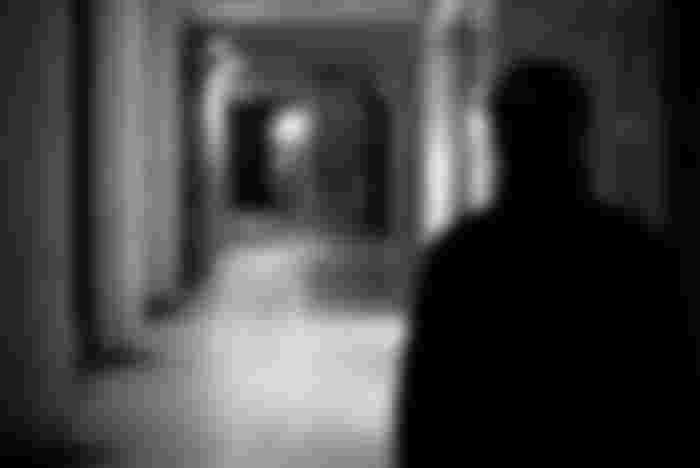5 Key Elements To Write Killer Movie Scenes
Every movie has a moment that's destined to become a classic, a sequence that sparks conversation and makes audiences draw breath. But what makes movies so captivating are the little moments in between the big scenes, moments that feel so normal, so real. Moments that are lost as easily as they're created. Every film has a moment in which the audience tense, in fear and expectation, to see what's going to happen next.
The question is: what does it take for one movie scene to truly stand out? That's a hard one to answer. Audiences can only draw such aesthetic beauty from something as specific as a film, but in my experience, the one thing that consistently stands out is a well-written character moment.
The most powerful sentences or paragraphs in movies, usually have a subtle emotional hook, that hook audiences in and make them feel something. But just because they are emotional doesn't mean they are devoid of logic, the contrary is the case. These few sentences work, because they are grounded in a sense of plausibility and reality.
Let's take a look at some key points, that will make a movie scene so enjoyable.
Setting The Scene

It just so happens that the best scenes in movies usually don't have much going on outside of them. There is something about the intimacy of the movie frame, that draws us into the story being told. It's almost as if the characters in the story have their own little world, that we can just look into. This allows the director and writers to build the scene in a way, that makes it feel more realistic and relatable.
It's no wonder then, that the best moments in movies are the ones that take place in one location. The simplicity of a one-room schoolhouse, or a small diner, for example, allows for many more character moments to occur. The interior of these locations become the characters. The windows to the outside world become the windows of the audience watching the movie.
Visual Imagination
This is probably the most important part of writing a great scene. The goal is to make your viewer feel as if they are a part of what's happening on-screen. Try to imagine yourself as the character, or rather, assume the role of the character. This allows for a more active involvement with the scene. When the viewer is put in the role of the character, the scene becomes more than just a scene; it becomes a piece of performance art, a play that the director and screenwriter have created in front of your eyes.
It's a lot like dreaming, in that you are passive in the experience and can't control the actions of the character. You become so involved with the character's mindset and emotional state, that you feel as if you're actually there, experiencing the events of the scene as the character would. This is how the most powerful scenes in movies are written. You get to travel to an alternate universe, where you are a part of the story before your eyes.
Cinematic Touches

There are certain movie techniques, that can be used to heighten the experience of the scene. The sounds of the character's footsteps and the ambient noise in the scene are two of the most important. These touches help to place the viewer in the experience and make the scene feel more real.
Another important element is camera angle and shot selection. In certain scenes, it's best to use an over the shoulder shot to look at the face of the characters. This allows for greater identification of the actors and therefore the scene. In a similar manner, editing the shots together can create a more fluid and seamless scene.
Finally, we must not forget about the score. The music that is played in the background can have a dramatic effect on the scene. Some scenes, like those that have a more somber or serious tone, benefit from a score that emphasizes the atmosphere and mood of the scene. Other times, a scene may require a more exciting or triumphant musical accompaniment.
Character Interactions
Character interactions are at the heart of a good story. They are the backbone of the narrative that holds everything together. Without them, everything is just too easy, too convenient and too dull. But, like all aspects of writing, they are not always straightforward. There are many ways to create the illusion of depth with simple and mundane actions. The trick lies in knowing when to stop.
There are two common forms of these scenes. The ones in which the characters do nothing more than talk and the action scenes in which the characters actually do something. There is a fine line between these two. Too much talking and it starts to border on the action scene. Too much action and it borders on the talking scene. It's only by knowing the context and cues in a given work, that one can identify whether it's an active scene or a simple talk scene.
Talking Scenes
These are probably the most commonly used scenes in storytelling. They are also the simplest. Usually, all it takes is some dialogue and some location, for a scene to come to life. Since it's a talking scene, the visual elements are secondary. There is a lot of space for creative freedom, as long as you create a sense of realism.
The trick starts by finding the right characters. You want a protagonist, obviously, and an antagonist. Typically, these characters are at the center of attention, or the focus of the scene. But, depending on how the scene is used within the story, they can either be more or less engaged with the action.
With these two characters, you need to find the right tone. Is it a dark and mysterious? A whimsical? A tragic? It all depends on the type of story you are trying to create. Once you've got those two down, the actual writing of the scene is pretty straight-forward.
Action Scenes
These scenes are the most difficult to write. They require a lot of forethought, as you need to know what you want the camera to show, what music to play and what touches to use. This also requires a lot of research. You not only need to know the physical actions of your characters, but also their emotional responses to these actions.
This is a lot harder than it seems. You not only have to consider the actions of the character, but also the reactions of other characters to these actions. The trick here lies in not only writing the actions, that you think should be taken, but also considering those that are not.
How would the character act if they were in a different situation? What would become of them? What would make this character act a certain way? As you can imagine, there are an infinite number of possibilities that can be considered before writing a single word. You might be asking yourself a lot of questions at this point. That's perfectly fine.
Endless Possibilities
The thing about writing is that you have a great deal of control over the final product. You can change almost anything about it, from the title to the amount of pages it's on. The reason this process can be so overwhelming is that there are so many different things that can be done, so many different choices that can be made. The good news is that there is almost always a right choice. There are very few absolute wrongs, only relative wrongs. It's a matter of finding the right one.
This is why it can be so overwhelming. As an author, you're always weighing the choices that you're given, trying to find the one that is best. But, that's the fun part, right? The process of writing can be very liberating, as you are freed from the tyranny of linear structure. There is no need to worry about the order of things, because things will unfold in a logical manner when they do. You are able to concentrate on the characters and their journeys and less distracted by the mechanical necessities of a story.
You are able to experiment a little more, to try things that you wouldn't normally do, because you aren't concerned with the legacy you are leaving behind. The only real challenge left, then, is to decide what to do first.
Thank you for reading.




For me: